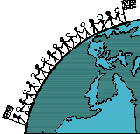|
|
|
|

|
 |
 |
 |
Immunisation |
|
Immunisation protects a child against several diseases such as tuberculosis, polio, diphtheria, whooping cough, tetanus and measles. A child is immunised by vaccines which are injected or given by mouth. The vaccines work by building up the child's defences to diseases. It is vital to immunise children early in life. Half of all the deaths from whooping cough, one third of all cases of polio, and a quarter of all deaths from measles occur before the age of one. All immunisation should be completed in the first year of the child's life. It is also very important to complete the full course of immunisations, otherwise vaccines will not work. Some vaccines need to be given only once, others up to three times. A pool of skilled health workers trained through the Uganda National Expanded Programme on Immunisation (UNEPI) work in teams to set up clinics in health centres, schools and even in open fields on set immunisation days. UNEPI can only succeed with regular and close liaison with parents, not only to make parents aware of the importance of getting their children vaccinated but also to ensure that appointments are kept. Ugandan Scouts play a very important part in the support role by raising awareness of the importance of vaccination and also by keeping records and ensuring that appointments are kept. There is also an immunisation proficiency badge which they can gain. Background information on Childhood Diseases 1. Diphtheria 2. Polio 3. Tuberculosis 4. Tetanus 5. Whooping Cough 6. Measles |